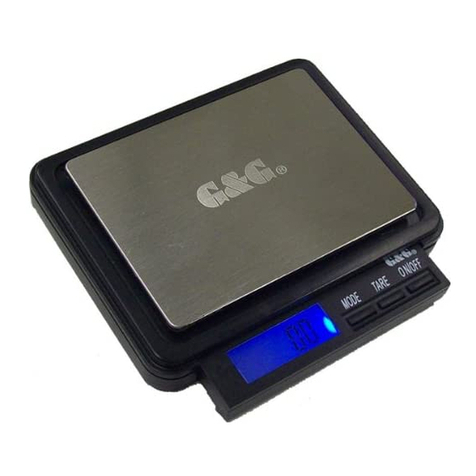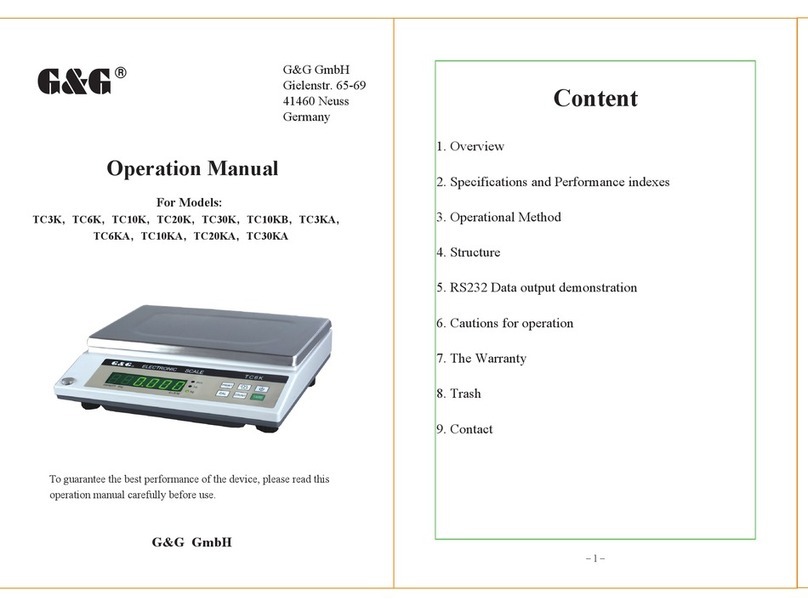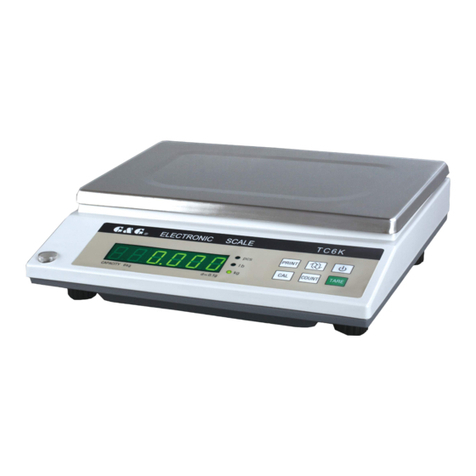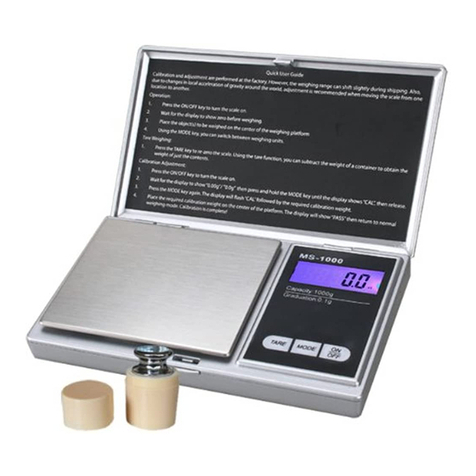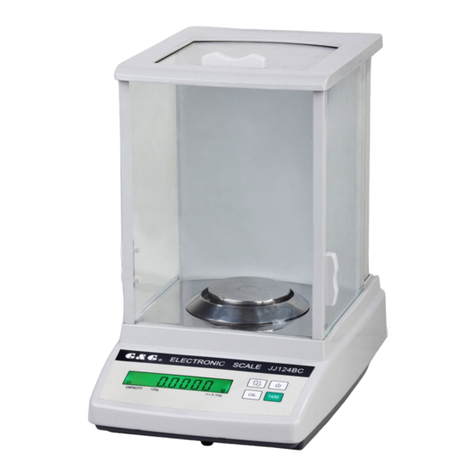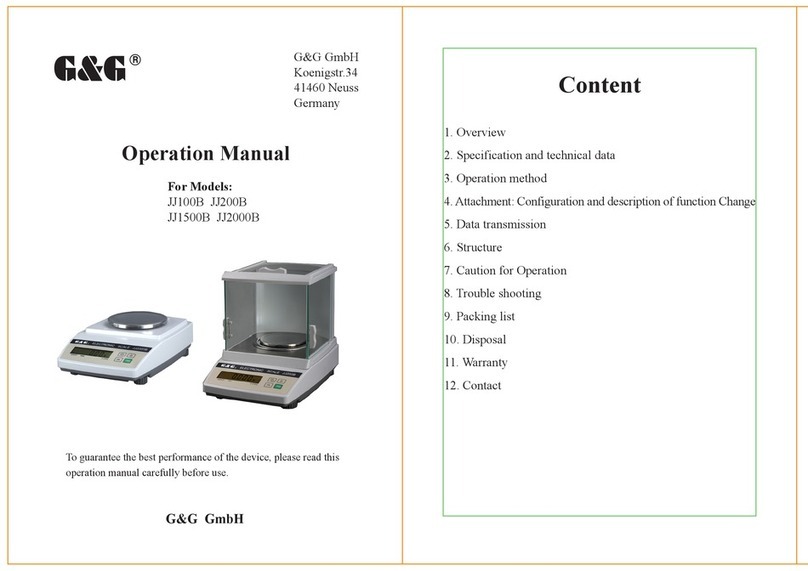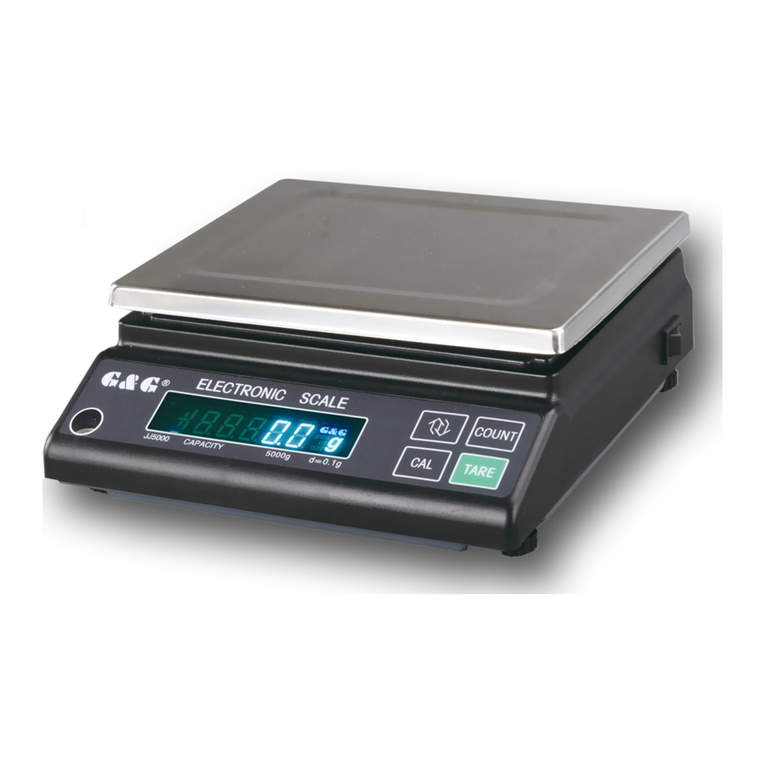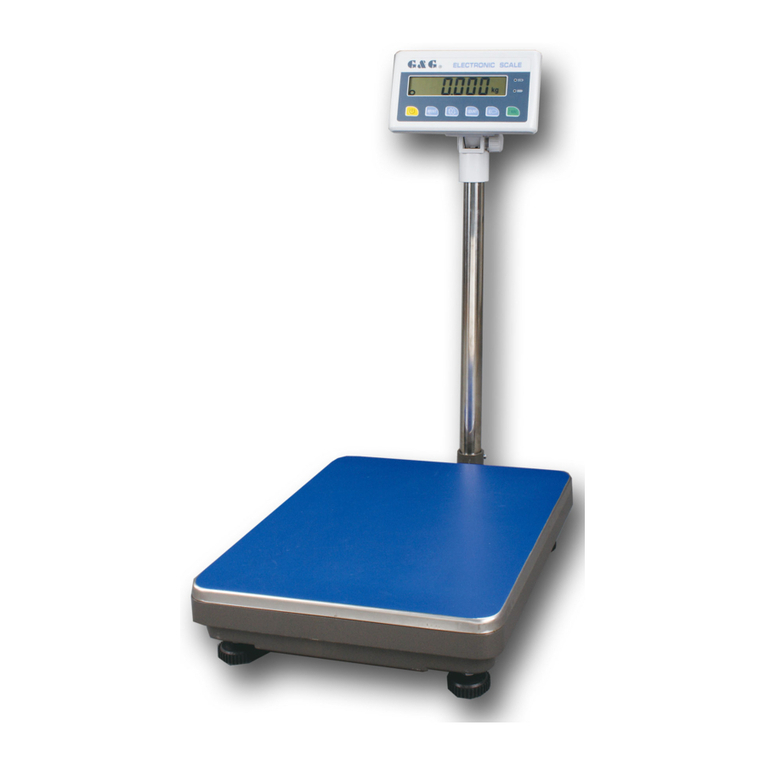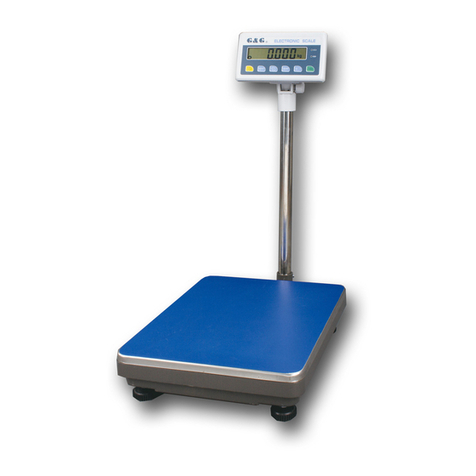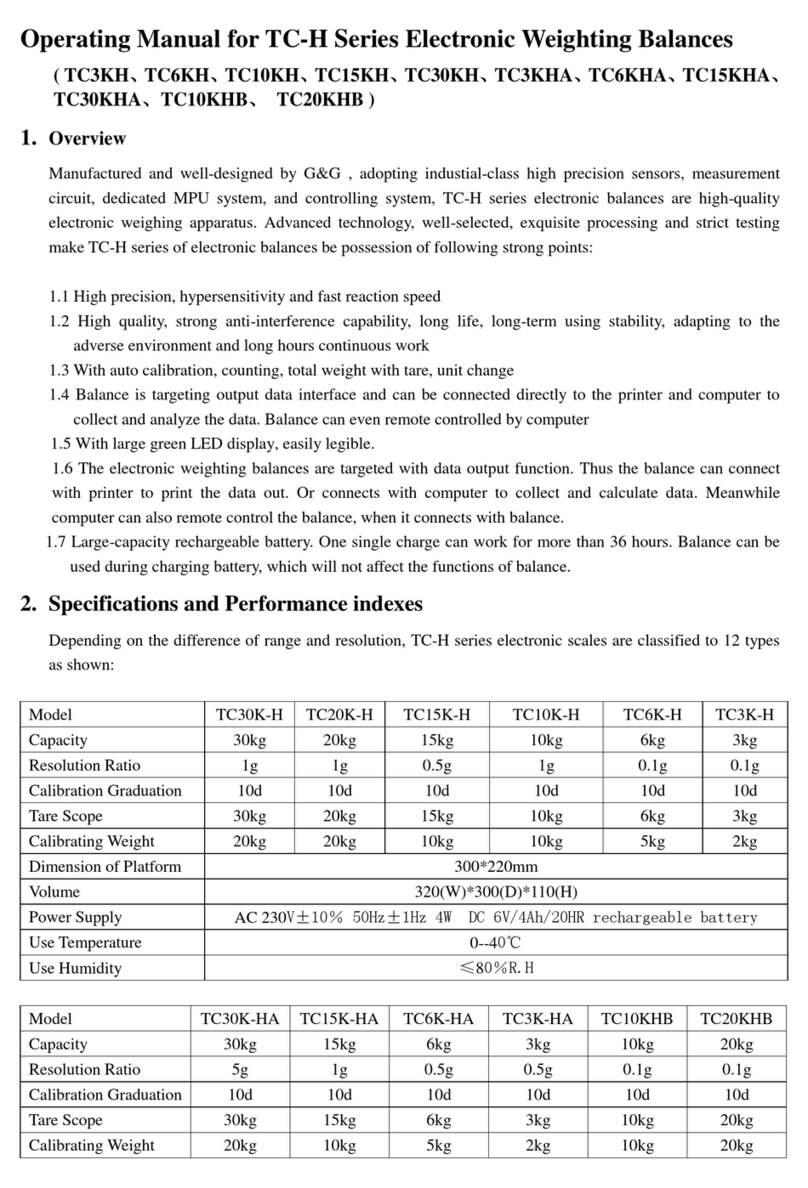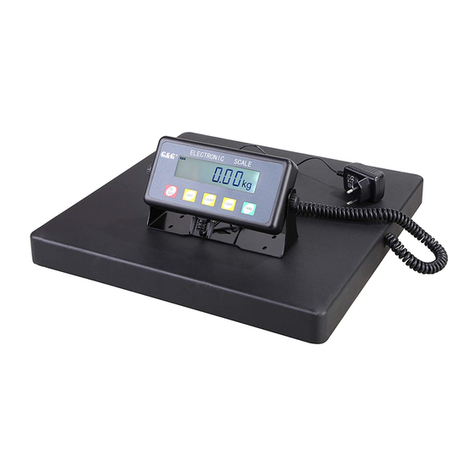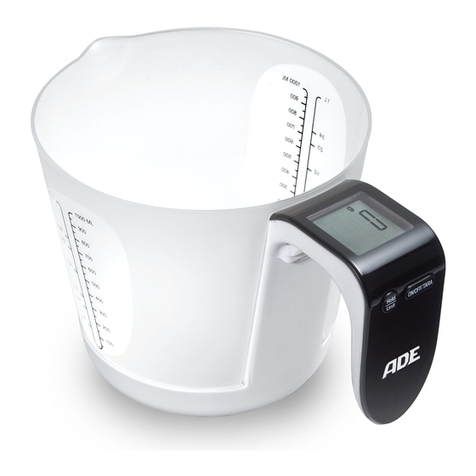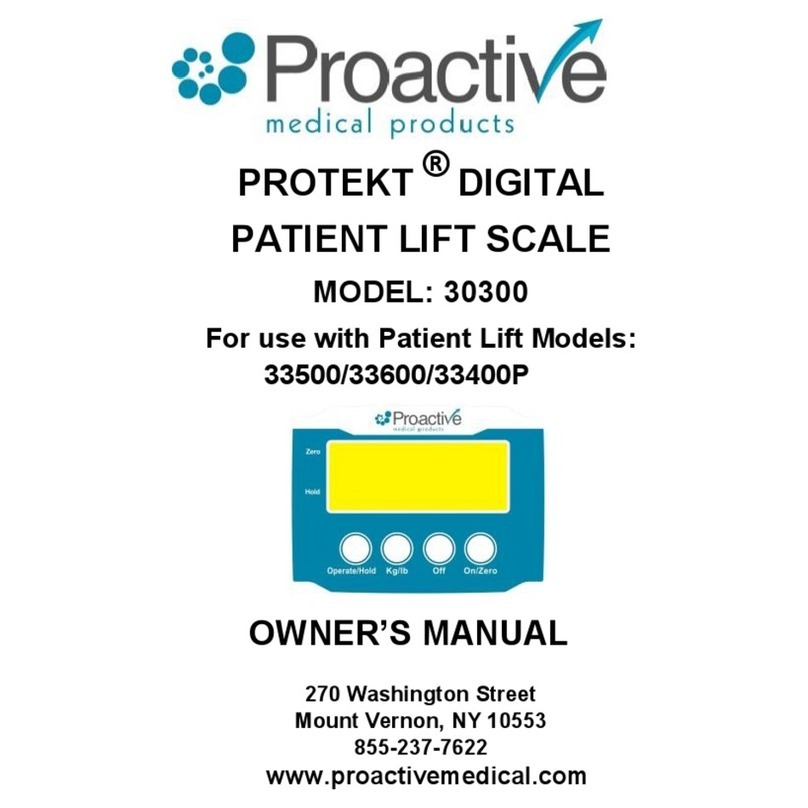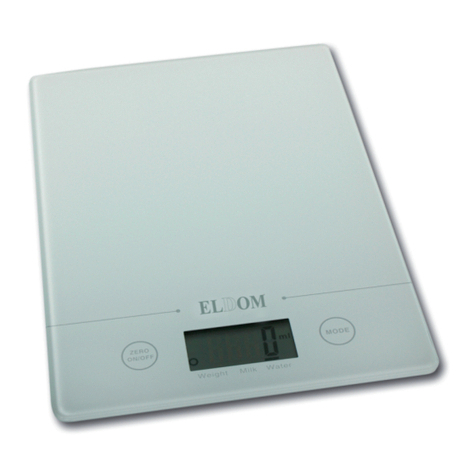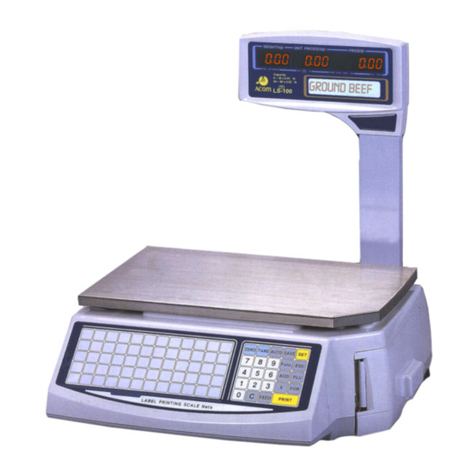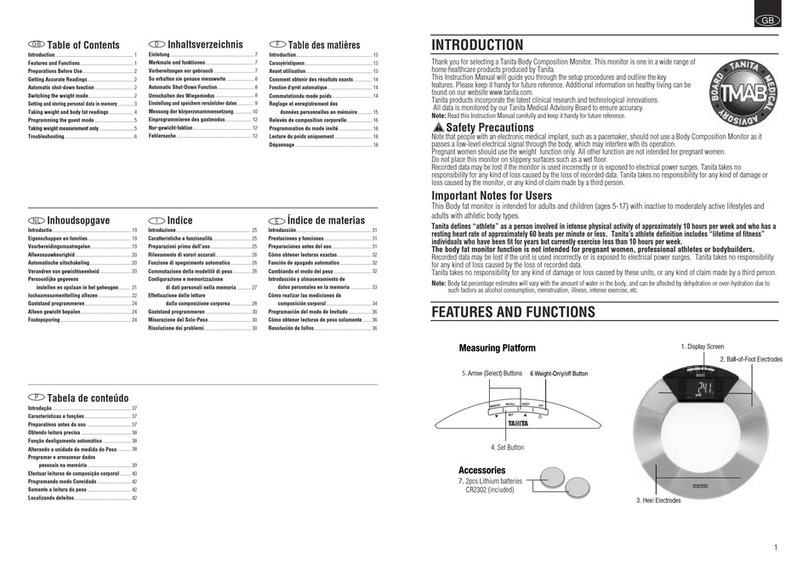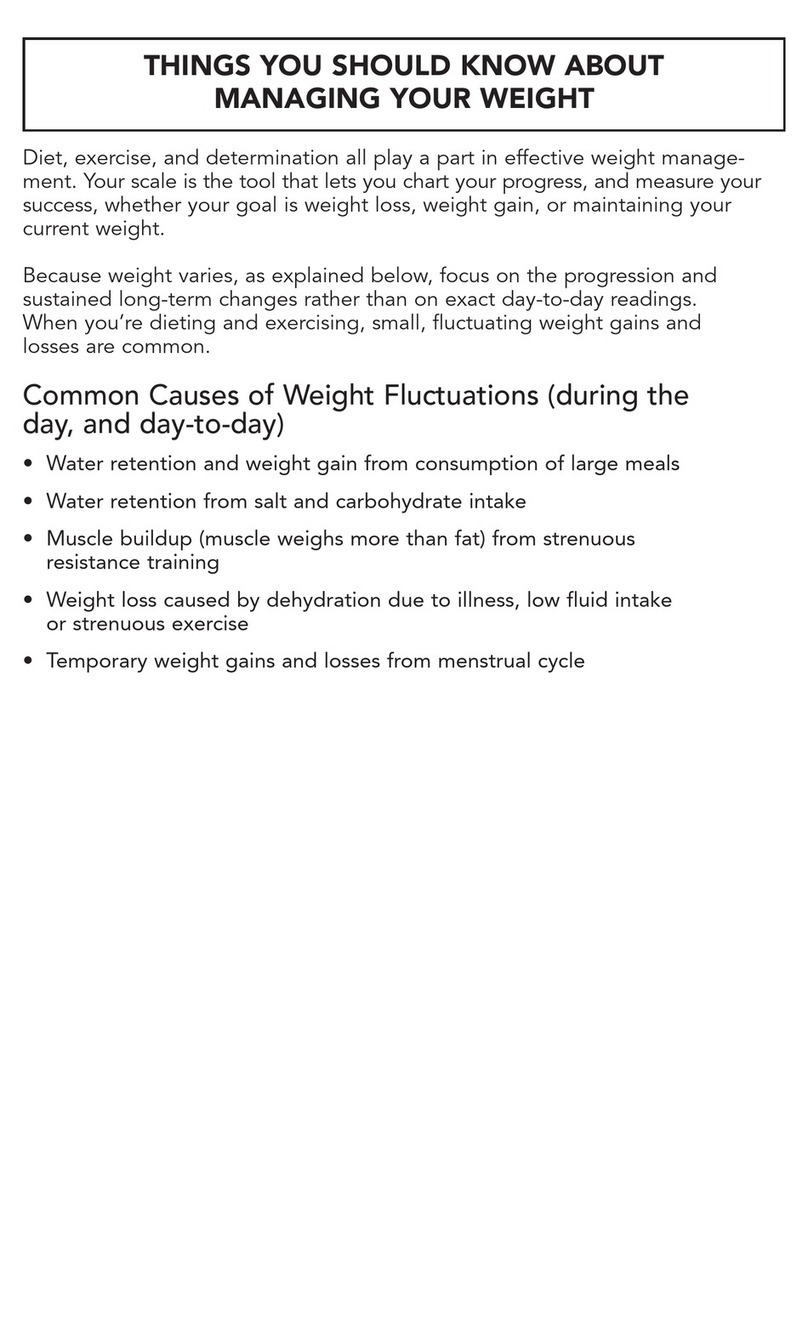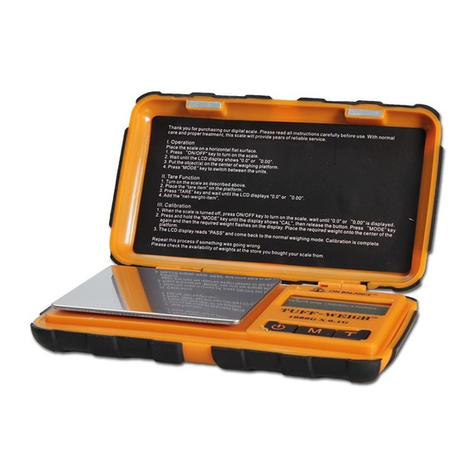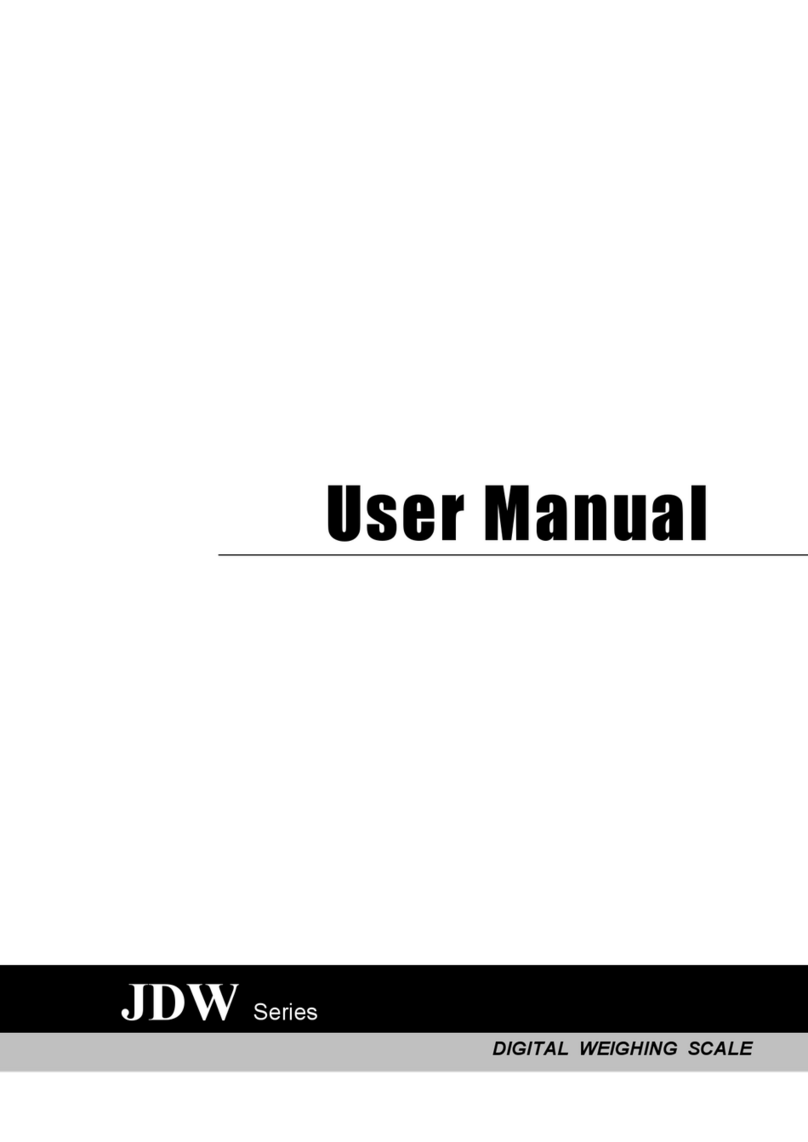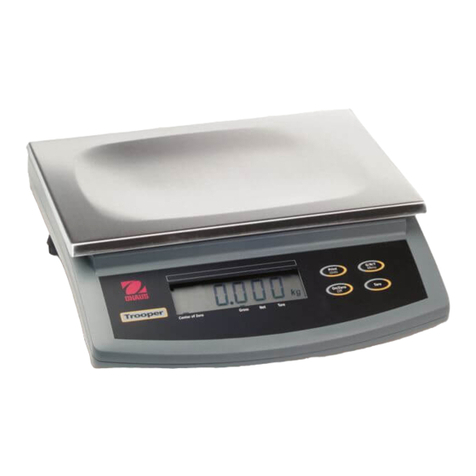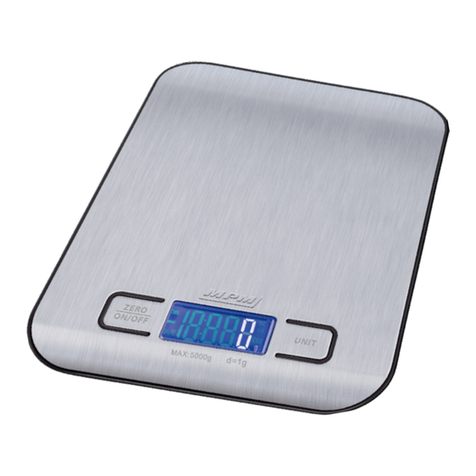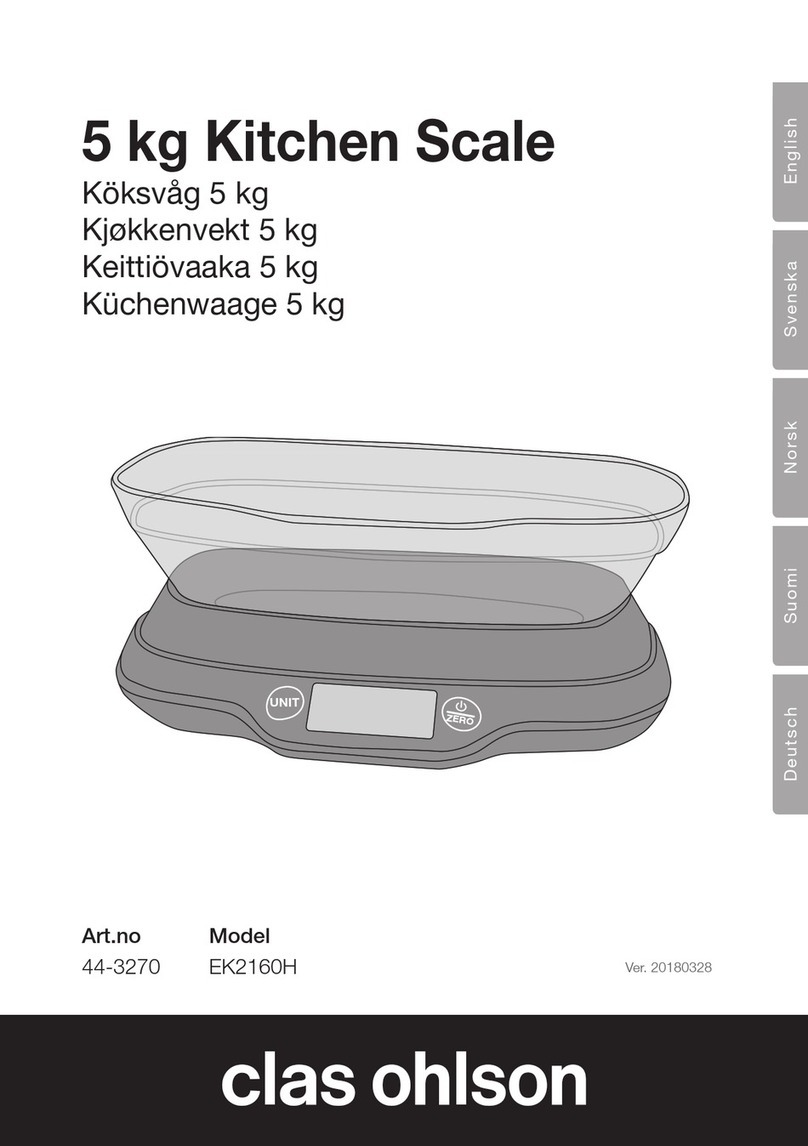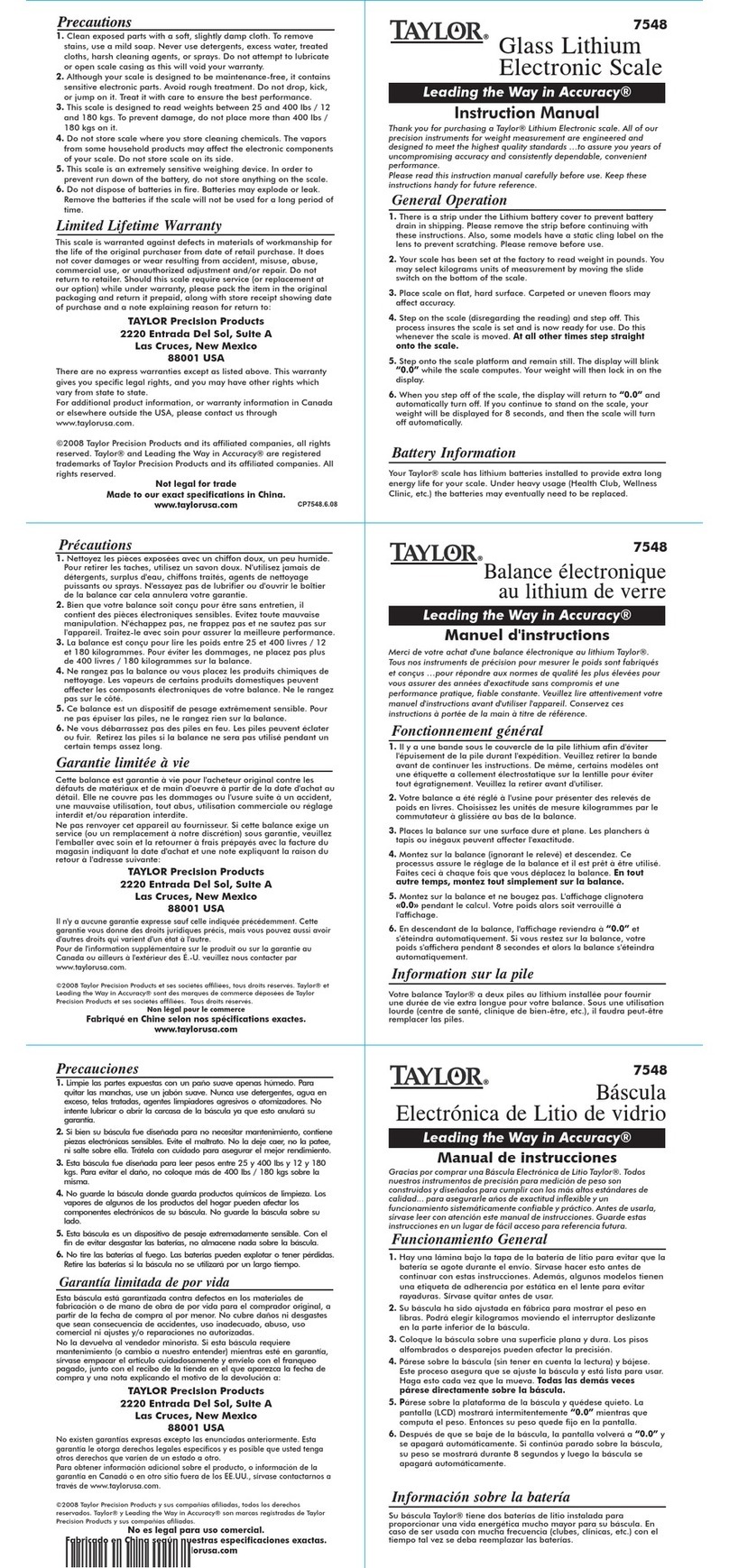G&G TC3KH User manual

1
To guarantee the best performance of the device, please read this
operation manual carefully before use.
For Models:
TC3KH、TC6KH、TC10KH、TC15KH、TC30KH、TC3KHA、
TC6KHA、TC15KHA、TC30KHA、TC3KHC、TC6KHC、
TC15KHC、TC30KH
Operation Manual
G&G GmbH
Gielenstr. 65-65
41460 Neuss
Germany
G&G GmbH
Content
1. Overview
2. Specifications and Performance indexes
3. Preparatory work and attentions
4. Operational Method
5. Displaying Information
6. Settings
7. Serial communication
8. Structure
9. The Warranty
10. Trash

21
Operating Manual for TC-H Series Electronic Weighting Balances
(TC3KH、TC6KH、TC10KH、TC15KH、TC30KH、TC3KHA、
TC6KHA、TC15KHA、TC30KHA、TC3KHC、TC6KHC、
TC15KHC、TC30KH)
1. Overview
Manufactured and well-designed by G&G GmbH, adopting industial-
class high precision sensors, measurement circuit, dedicated MPU system,
and controlling system, TC-H series electronic balances are high-quality
electronic weighing apparatus. Advanced technology, well-selected,
exquisite processing and strict testing make TC-H series of electronic balances
be possession of following strong points:
1.1 High precision, hypersensitivity and fast reaction speed
1.2 High quality, strong anti-interference capability, long life, long-
term using stability, adapting to the adverse environment and long hours
continuous work
1.3 With auto calibration, counting, total weight witht are, unit change
1.4 Balance is targeting output data interface and can be connected
directly to the printer and computer to collect and analyze the data. Balance
can even remote controlled by computer
1.5 With large green LED display, easily legible.
1.6 The electronic weighting balances are targeted with data output
function. Thus the balance can connect with printer to print the data out.
Or connects with computer to collect and calculate data. Meanwhile com-
puter can also remote control the balance, when it connects with balance.
1.7 Large-capacity rechargeable battery. One single charge can work
for more than 36 hours. Balance can be used during charging battery, which
will not affect the functions of balance.
2. Specifications and Performance indexes
Depending on the difference of range and resolution, TC-H series
electronic scales are classified to 14 types asshown:
Model TC30K-H TC20K-H TC15K-H TC10K-H TC6K-H TC3K-H
Capacity 30kg 20kg 15kg 10kg 6kg 3kg
Resolution Ratio 1g 1g 0.5g 1g 0.2g 0.1g
Calibration Graduation
10g 10g 5g 10g 2g 1g
Tare Scope 30kg 20kg 15kg 10kg 6kg 3kg
Calibrating Weight 20kg 20kg 10kg 10kg 5kg 2kg
Dimensionof Platform
300*220mm
Volume 320(W)*300(D)*110(H)
Power Supply
AC230V±10% 50Hz±1Hz 4W DC6V/4Ah/20HR rechargeable battery
Use Temperature 0--40℃
Use Humidity ≤80%R.H
Model TC30K-HA TC15K-HA TC6K-HA TC3K-HA
Capacity 30kg 15kg 6kg 3kg
Resolution Ratio 5g 2g 1g 0.5g
Calibration Graduation 50g 20g 10g 5g
Tare Scope 30kg 15kg 6kg 3kg
Calibrating Weight 20kg 10kg 5kg 2kg
Dimensionof Platform 300*220mm
Volume 320(W)*300(D)*110(H)
Power Supply
AC230V±10% 50Hz±1Hz 4W DC 6V/4Ah/20HR rechargeable battery
Use Temperature 0--40℃
Use Humidity ≤80%R.H
Model TC30K-HC TC15K-HC TC6K-HC TC3K-HC
Capacity 30kg 15kg 6kg 3kg
Resolution Ratio 2g 1g 0.5g 0.2g
Calibration Graduation 20g 10g 5g 2g
Tare Scope 30kg 15kg 6kg 3kg
Calibrating Weight 20kg 10kg 5kg 2kg
Dimensionof Platform 300*220mm
Volume 320(W)*300(D)*110(H)
Power Supply
AC220V±10% 50Hz±1Hz 4W DC6V/4Ah/20HR rechargeable battery
Use Temperature 0--40℃
Use Humidity ≤80%R.H

3 4
3. Preparatory work and attentions
3.1 Using environment: indoor, max. Altitude: 2000m, temperature:
0-40℃, humidity 80%, Power fluctuations lessthan ±10%.
3.2 The scale should avoid sharp temperature changing, intense air
flowing and ground vibration. And keep the scale away from heat and humidity
3.3 Place the balance on the flat and solid table. Adjust the fourlegs to
support the balance.
3.4 Use separate power outlet and avoid dynamic power.
3.5 The electronic scale is a precision instrument which needs to
begently handled during the weighing of articles. Avoid impact and heavy
load on top (never exceed its max. weighing limit). Any forms of impact
or overloading many cause permanent damage to the electronic balance,
even in the use of electronic balance with outpower supply.
3.6 15min. preheating is needed.
3.7 When the indicator of battery lights, which means battery is near
empty and needs to recharge. Using balance under this situation can result
in an instability or major error. At the same time, the backlighting and
calibration will automatically shut down.
3.8 Because of long-term not using, the scale must be placed in dry-
ventilated place and recharge every three months. Charging is necessary
before or during re-using.
3.9 Warning: If the equipment is used in a manner not specified by this
instruction the profection provided by the equipment may be impaired
3.10 Gentle handling in daily using, with dry and clean cotton cloth
cleaning.
4. Operational Method
4.1 The newly bought or long-time not used balances should be conn-
ected with power supplier before using. In order to charge the battery. Turn
on the power. Open the switch. The displaying windows displays from
“F----1” to “F----9” and after a certain time for stabilizing, “0” appears;
Then preheats for 15 minutes.
4.2 With empty scale platform, the displaying deviates from zero,
pressing “TARE” key, then the displaying will return to zero. For removal
of the weight of packaging materials, first stage please place the packing
containers on the pan, after stabilization press “TARE”, it shows 0. Then
put the items into the container. At this point it shows the net weight of the
items. Take off the container and items, it shows the minus value of the
packing container. Press “TARE” again, it goes to 0.
4.3 If the scale has not been used for a long time or just bought, the
scale should be calibrated. Firstly, the scale is fully preheated (over 15 min.)
with empty scale platform. Then press “CAL”, the displaying window
displays “CXXX” and the balance will automatic calibrate (XXX should be
the weight of standard weights. For instance, “C---20” indicates to put 20
kg test weights). At the same time, only place calibrating weights on the
scale platform. After stabilizing, the scale displays the weight of the calib-
rating weight sand the symbol “kg”; till now the calibration is completed
and the scale can be normally used. If press “CAL”, but display “C----F”,
which indicates the Zero point is not stable. Then re-press “TARE” to make
“zero” points table; and re-pressthe “CAL” to carry out calibration.
4.4 Count
4.4.1 Choose samples. To precisely count the articles, the quantity of
samples for counting should be chosen in according with the weights of the
articles. The quantity of samples can be chosen from “1-10-20-50-100”.
For a small number of articles, the larger quantity of samples, the more
precise.
4.4.2 Place the samples on the pan, the balance will show the total
weights of samples. Then press “Count”, balance will show “1”, and unit
will show “pcs”, which indicates that balance is now counting. And all the
samples are one unit. Then press “kg/lb”, the displaying will show between
1-10-20-50-100. The quantity of articles must be the same with the quantity
of samples, and place the similar articles. The total amount of objects is
showed. Press the “Count” again back to the normal situation.
4.5 Unit Change
Press “kg/lb”, the units will be changed between “kg” and “lb”. The
indicator will lighten.

65
4.6 Data Output RS232 inter face is recommended. And can be connected
to printer or computer
5. Displaying Information
5.1 Display window F----1 data beyond scope
F----2 AC/DC conversions
F----3 buttons
F----5 sensor faults
F----L lower zero position of sensor signal
F----H overload
C----F calibration error, instability or not at zero point during calibrating
C----H calibration error, items on the pan or at higher zero point
during calibrating
E------ Storage calibration data error, re-calibration is necessary
5.2 Indicator
kg(g) lightening with stable data, the weighting units is kg or
lb lightening with stable data, the weighting units is lbr
pcs lightening with stable data, and counting situation
Lower voltage lightening in lower voltage with warning. Charge is
needed, otherwise can only last 1—2 hours. Balance is still working during
charging.
Charge lightening during charging. One single charging needs 8 hours
Full charge slowly lightening at beginning of charging, and turning
off after full charging
6. Settings
Start the unit by holding down the “CAL” key till it comes to “F----3”
and you are in the setting mode. And pressing “CAL” can change the par-
ameters; pressing “TARE” can change the values of parameters.
6.1 C1------ sensitivity setting 0 1 2 3 4, the larger number is, the less
sensible but the better stable. Default setting is 2 or 1
6.2 C2------ filtering strength setting 0 1 2 3, the larger number is, the
lower reaction speed, but the better stable. Default setting is 2 or 1
6.3 C3------ Baud rate setting 2(600) 3(1200) 4(2400) 5(4800) 6(9600)
7(1200). Default setting is 2
6.4 C4------ communication setting. “TARE” changes the lower unit.
“COUNT” changes the higher units. This data is the first data during com-
munication. Default setting is 27.
6.5 C5------ units change. 0 is for units changing and 1 for printing.
Default setting is 0. Re-press “CAL” after setting. Then the balance is auto
calibrated to 0.
Start the unit by holding down the “TARE” key till it comes to “F----3”.
All the parameters can be reset to default settings. Re-calibration before
using
7. Serial communication
Working way: 8 units data, 1 unit data, ending unit without calibration
Receiving data:
Signal+orders Print 70H (ACSII code p)
Calibration 71H (ACSII code q)
Accumulation 72H (ACSII code r)
Units change 73H (ACSII code s)
Tare 74H (ACSII code t)
Sending data
12345.6□kg↓←14 units
e.g. VB communication process for C3---2 C4—27 (Default settings)
MSComm1.Settings ="600,n,8,1"
MSComm1.Output= Chr(&H1B) + Chr(&H70)’ sending print order
’MSComm1.Output= Chr(27) + Chr(112)
’MSComm1.Output= Chr(27)+ "p"
Do
DoEvents
Loop Unti MSComm1. InBufferCount = 14
a = MSComm1.Input
Print a

7 8
8. Structure
8.1
(1) TARE (2)COUNT
(3) CAL (4) UNIT
(5) Display windows (6) Level indicate
(7) Level adjust (8) Power switch
(9) Power socket (10) Scale pan
(11) Data output
8.2 Installation
9. The Warranty
9.1 We provide warranty within the scope of the statutory regulations,
however we are entitled to either repair or replace the defective product.
9.2 Within two years after purchase, the producer offers a free repair
service to all G&G Product, which become defect under proper usage without
human damage. The customers are kindly requested to mail the product as
well as its original proof of purchase to the producer. Notification of defects
and complaints shall be made in writing after the delivery has been received
at the point of delivery. For legitimate notifications of defects and warranty
cases we are entitled at our own discretion to either replace the delivery at
the prices which were valid at the time of the complaint or to rectify the defect.
9.3 We have the right to try to replace the defective product at most
twice. There will be a slight charge for the repair service of those products,
by which the warranty period expires. Defective goods may only be returned
to us by the customer with our express approval and at the customer's cost
and risk. The notification of the defect does not release the customer from
his obligation to pay.
9.4 Please attach the address, postal code and telephone number of the
buyer, so that we can mail the repaired product back in time.
10. Trash
Meaning of crossed–out wheeled dustbin:
Do not dispose of electrical appliances as unsorted municipal waste,
use separate collection facilities.
Contact you local government for information regarding the collection
systems available.
If electrical appliances are disposed of in landfills or dumps, hazardous
substances can leak into the groundwater and get into the food chain, dam-
aging your health and well-being.
When replacing old appliances with new ones, the retailer is legally
obligated to take back your old appliance for disposals at least free of charge.
11. Contact
Address: G&G GmbH
Gielenstr. 65-69
41460 Neuss
Germany
Tel: +49-2131-1 33 56 05
Fax: +49-2131-1 33 56 07
Email: [email protected]
Website: www.gandg.de
This manual suits for next models
11
Other G&G Scale manuals

